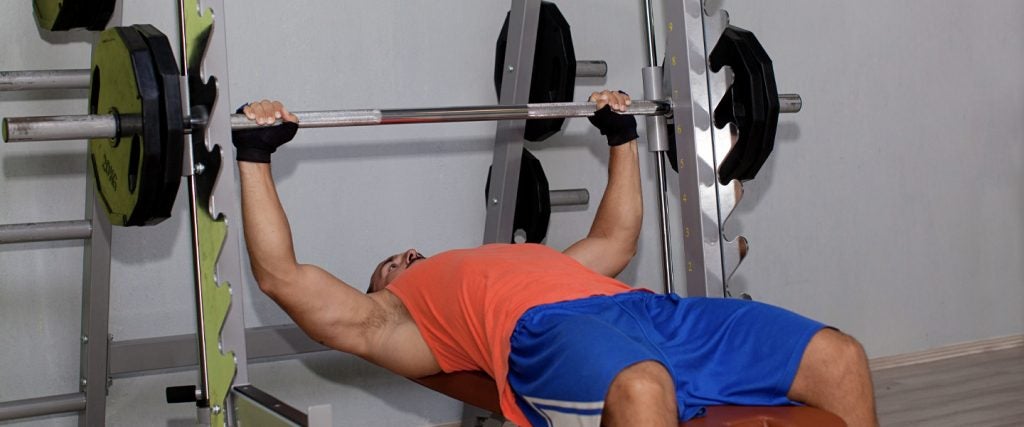When I began truly lifting weights in earnest, I did so under the guidance of my swim coach, alongside everyone else on the high school swim team. But rather than getting access to the school’s expansive free-weight room, which was frequented by the football and wrestling teams, we were relegated to using the classic 1970s Universal Gym located behind a steel fence at the top of the stage within the gymnasium.
While the arrangement wasn’t the greatest, our team made the most out of what we’d been provided, and we packed on some noticeable muscle over the course of our training. Despite this, we occasionally elicited snide comments from members of the football and wrestling teams, generally insinuating that we weren’t using “real weight.” “How can the weight be fake when these muscles are obviously real?” I thought to myself.
It wasn’t until five years after I’d graduated from high school that I finally tried my hand at training with free weights for all of my lifts. And guess what? Much to my chagrin, those football players had a point. Unless you understand the feel of controlling a weight as it moves through space with the potential to dart off in any direction, you can’t fully comprehend the difference in the feel between a weight that can move freely, and a weight that’s been set along a guided path.
What about the Smith Machine?
The Smith Machine is an attractive piece of equipment for several reasons. In its form, it resembles a standard Olympic-style weight bar, only with hooks attached to it. No matter where the bar finds itself along its pre-set path, it can be rolled forward (or backward depending on how you’re situated) to safely latch and lock the bar into a secure position. In its function, it operates like a multi-dimensional machine weight, where the bar moves along a guided path, and you determine what training motion you wish to utilize.
From a safety standpoint — and especially when you’re lifting without a gym buddy or a spotter — the Smith Machine theoretically provides you with a marvelous bailout option. If you get stuck, you simply use your wrists to roll the bar in the appropriate direction to secure it, and then slide out of the way.
What if I want to use the Smith Machine as my main bench-pressing option?
The fact that the weight is set along a predetermined path when it sits on a Smith Machine is both a gift and a curse. The gift is that you never have to be concerned about the weight moving anywhere outside of the vertical plane it’s been set upon. The curse is that you can never establish the fundamental mind-muscle connection that every elite lifter should have, especially when attempting to manipulate heavy weights and get those benefits to translate to real-world scenarios.
In the case of the bench press on the Smith Machine, let’s compare it to a dumbbell bench press: As you lower the dumbbells toward your chest and press them back to their uppermost position, every muscle in your chest and midsection is firing in order to hold those dumbbells in place and guide them to wherever you wish them to go. Unless you’re very precise in your movements, those dumbbells are liable to move absolutely anywhere because the only force preventing them from doing so is provided by you. As such, training with dumbbells is a great way to diagnose and correct strength imbalances that exist between the sides of your body.
Conversely, on a Smith Machine, if the weight gets heavy, you can wriggle, contort, shimmy and shake as much as you need to; not to mention, the weight can only move in two directions — up or down. From a safety standpoint, this may sound good, but from a performance standpoint, it’s abominable. It’s a terrific place to pick up bad habits, and then reinforce those habits repeatedly.
So how should I be using the Smith Machine?
If you choose to employ the Smith Machine as a bench-pressing tool, I’d limit its use to breaking your pecs down to near-complete failure after you’ve already done the bulk of your chest work using the freestanding barbell bench press or dumbbell bench press. That way, you will have already done the crucial work of taxing your stabilizer muscles during your heavy lifts.
Finally, I’d be remiss if I didn’t mention that while it’s true that there’s a far lower risk of death or serious injury with the Smith Machine, calculating the required roll-back (or roll-forward) space for the bar can be catastrophic to your wrists. Essentially, you may find yourself pressing more than 200 pounds off the rack with your wrists in a compromised position, then rolling that weight forward using primarily the strength of your wrists, and hoping that your hands can find a slightly optimal position before the bar begins its descent to your chest. From there, you’ll have to complete your set and roll that bar back into its latching position when you have less strength remaining in your chest to help support the motion. And just because the bar can find a safety latch, that doesn’t mean it will always rescue you before it makes contact with your body, so a spotter may still be required.
Ouch. I guess the Smith Machine is really only good in theory.
Yep, and by now, I hope I’ve completely blown that theory to smithereens.

